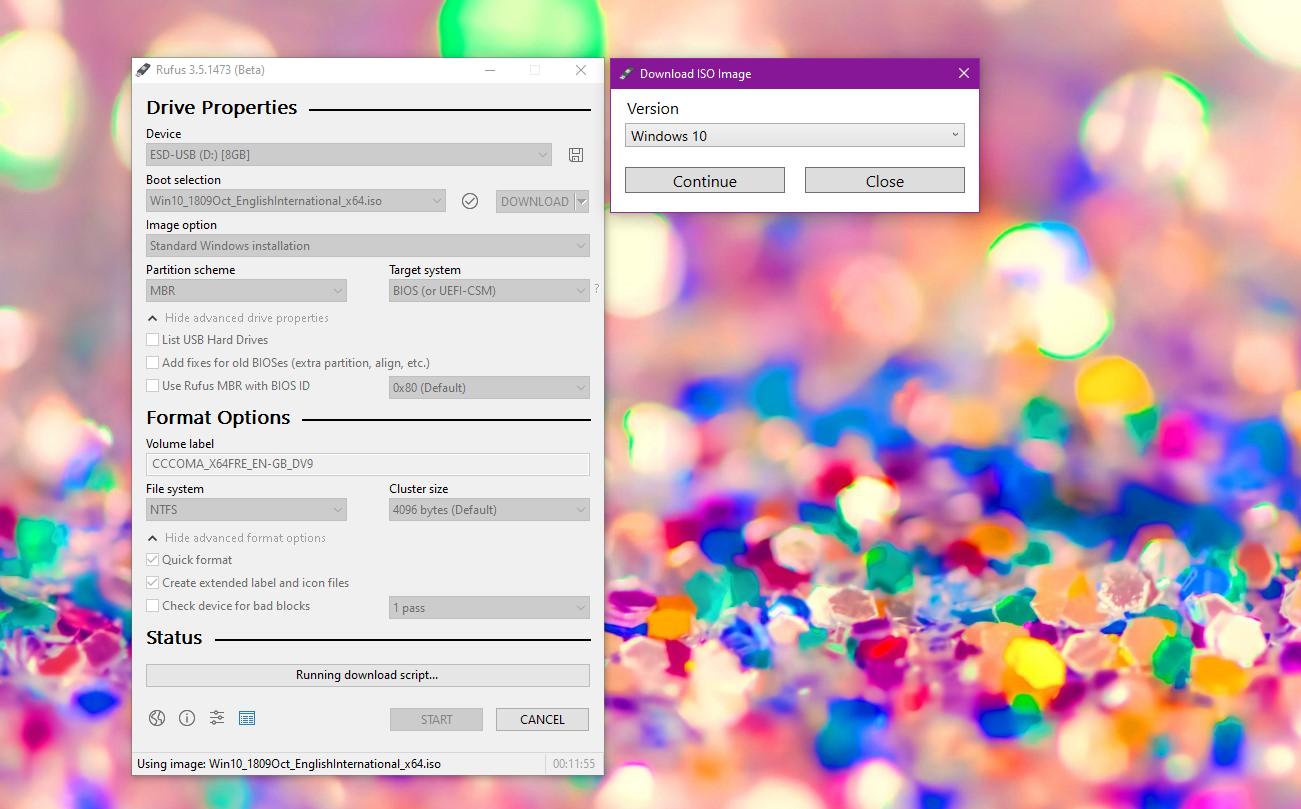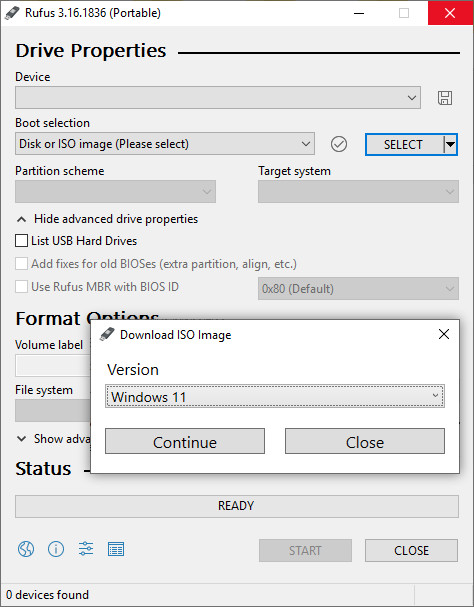

Check to Create a bootable disk and ensure that the ISO Image is selected from the drop.

Then, choose the GPT partition scheme for UEFI and leave the File System & Cluster Size to default settings and label the drive. Rufus is a handy program that is ideal for any troubleshooting toolkit. After Rufus and the ISO have been downloaded open Rufus and choose the Device (USB) which should be used as your bootable media. The process itself does not take too long it depends on the size of the ISO, and the speed of the USB drive mainly. Click on okay to continue, or cancel to stop the process and return to the main interface of the program. The program displays a warning prompt to inform you that all data on the disk will be deleted in the process. You may get a notification that it is too big for the USB device. Rufus will check the image and compare it to the available disk size. Once you have made the necessary changes click on the start button to start the process. To avoid issues, only removable drives are listed under device so that you cannot accidentally format one of the fixed drives. Make sure you have backed up important data before you proceed. Parent Directory - rufus-3.16.exe 12:31 1.1M Rufus 3.16 12:31 1.1M Rufus 3.16 (Portable Version) 12:29 3.2M Rufus 3.16 (ARM64 Version) 12:29 3.0M Rufus 3.16 (ARM Version). All content that is on it is lost therefore. Although Rufus 3.5 gets this new feature, the feature is not fully integrated into Rufus.
#RUFUS ISO CREATOR WINDOWS 10#
Starting with Rufus 3.5, Rufus can download Windows 10 ISO from Microsoft servers and prepare the bootable USB.
#RUFUS ISO CREATOR SOFTWARE#
Note: The selected device will be formatted during the process. Good news is that you no longer need to use the Media Creation Tool or any other software to download Windows 10 ISO as Rufus can now do that. If you select a Windows installation ISO for instance, you may get the option to create a standard Windows installation disk, or setup Windows to Go. Rufus may display additional options if it identifies the image correctly. Most are fine however for most use cases, but you can change the volume label for instance, enable disk check to check for bad blocks on the USB drive, or disable quick format.Īdvanced options let you change the cluster size and file system, and the partition scheme. You may then modify other settings to your liking.


 0 kommentar(er)
0 kommentar(er)
